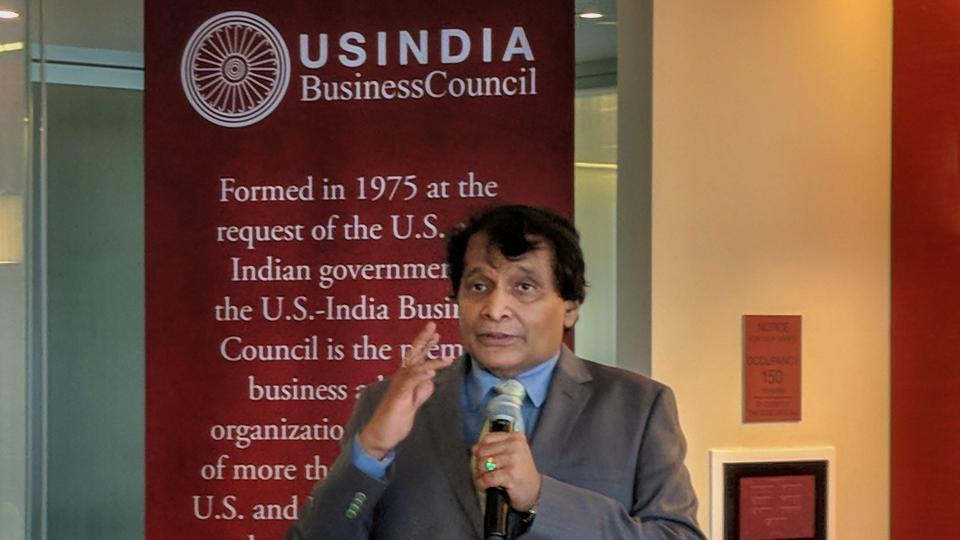Just days after a national campaign in which he vowed repeatedly to repeal President Obama’s signature health care law, Donald J. Trump is sending signals that his approach to health care is a work in progress.
Mr. Trump even indicated that he would like to keep two of the most popular benefits of the Affordable Care Act, one that forces insurers to cover people with pre-existing health conditions and another that allows parents to cover children under their plan into their mid-20s. He told The Wall Street Journal that he was reconsidering his stance after meeting with Mr. Obama on Thursday.
The comments added to a sense of whiplash about the law and its future. More than 100,000 Americans rushed to buy health insurance under the Affordable Care Act on Wednesday, the biggest turnout yet during this year’s sign-up period, underscoring that millions of people now depend on the law for coverage.
Beyond Mr. Trump’s comments, new plans laid out on his presidential transition website this week deviate from what he had proposed during the campaign, and he added ideas that appeared to more closely align with the mainstream Republican agenda.
Continue reading the main story
ADVERTISEMENT
Continue reading the main story
The new plans drop all mention of reining in high drug prices, which Mr. Trump had advocated for months, and add new language about modernizing Medicare, a potential nod to congressional efforts to give people vouchers toward buying private health insurance.
“Health care is shaping up as a priority for the Trump administration and Republicans in Congress,” said Larry Levitt, an executive at the Kaiser Family Foundation, which closely tracks health policy. “But we still have very little detail about what that really means.”
The health care industry, which invested hundreds of millions of dollars in preparing for business under the Affordable Care Act, is disoriented about what to do next — and scrambling for ways to avoid a financial shock. A repeal of the act would mean the loss of millions of customers for insurance companies and uninsured people turning to hospital emergency rooms for basic care.
Mr. Trump, in an interview to be broadcast on CBS’s “60 Minutes,” said the guarantee of coverage for people with pre-existing conditions was “one of the strongest assets” of the law. He also said he would try to preserve the measure allowing young adults to remain on their parents’ insurance until age 26.
“We’re going to do it simultaneously — it’ll be just fine,” he said, saying that people would not lose coverage when the law was repealed.
Policy experts say that the part of the law that Mr. Trump is rethinking, that prevents insurers from refusing to cover people with costly medical conditions, only works financially for insurers if there are plenty of healthy people also buying insurance. If only sick people enroll, premiums would soar. To get healthy people covered, the existing law includes generous subsidies to help more people to afford a policy and taxes people who don’t buy insurance.
Industry executives say their first priority is to persuade Mr. Trump and the new Congress to replace the law with some way for people to continue getting coverage.
The problem is that, until now, top executives from the biggest insurers have not heard from Mr. Trump or his close advisers about his plans. In fact, the industry as a whole made no contingency plans for a Trump victory and does not yet appear to have developed a strategy. In the last few days, executives have huddled hurriedly with their boards and advisers to discuss how to react.
In mapping out various election result possibilities, “this wasn’t on the sheet,” said Mark Bertolini, the chief executive of Aetna. “We had no idea how to approach it.”
The consequences are urgent. About 22 million Americans would be without insurance if the law were repealed. The state marketplaces, where about 10 million of those people buy insurance, would no longer exist. The millions of others who were newly eligible for Medicaid would also lose coverage.
“I’m concerned about the fear factor of what is going on,” said Bernard J. Tyson, the chief executive of Kaiser Permanente, the system based in California that includes hospitals, doctors and an insurance plan. He said the company was already getting calls from people worried about whether they would still be able to get coverage. Both federal officials and insurance executives say people should not hesitate to sign up during the current open enrollment period.

Terri Marsh, 61, in Goose Creek, S.C., did not hesitate to sign up again for a Blue Cross plan as soon as she could. “Insurance is something you have to have,” she said. Before the marketplace plans were available, she had been without coverage for five years, despite having a serious inflammatory disease.
“Because I have a pre-existing disease that is off the wall for them, I could not get insurance,” she said. Without getting the coverage through the law, she said, “I could possibly be dead.”
Yet Republicans have seized on some areas where the law is struggling and in the government-run insurance marketplaces in particular. This month, for example, Republicans highlighted the sharp rise in the average price of an insurance plan on the marketplace — 25 percent — as proof that the law was fatally flawed. Mr. Bertolini warned that rates could go even higher next year.
Without a 60-vote supermajority in the Senate, Republicans will probably be unable to repeal the entire Affordable Care Act. But they can eliminate several consequential provisions through a special budgetary process called reconciliation.
Last year, the Senate passed a reconciliation bill that undid large portions of the health bill. The House passed it. President Obama vetoed it.
The bill would have eliminated the expansion of Medicaid coverage for Americans near or below the poverty line. It would have eliminated subsidies to help middle-income Americans buy their own insurance on new marketplaces. It would have eliminated tax penalties for the uninsured, meant to urge everyone to obtain health insurance. And it would have eliminated a number of taxes created by the law to help fund those programs. (It was written to kick in after two years, meaning the programs would not disappear immediately.)
Many parts of the law cannot be repealed through reconciliation. Among them are reforms to the Medicare program, a provision that requires insurers to cover young adults on their parents’ policies, and requirements that health insurers sell policies to anyone regardless of their health history. Those parts of the law are very likely to remain law.
Crucial aspects of the bill can be undone in a number of other ways, too. The administration could simply halt efforts to sign people up for the state marketplace plans. Or Congress could eliminate the federal subsidies that help millions of people afford a plan. Either one of those moves would most likely cause far fewer people to sign up for insurance, leading to instability or collapse of the insurance marketplaces.
“There are a lot of different triggers that can be pulled,” said Benjamin Isgur, the leader of the PwC Health Research Institute.
For the insurers and hospitals, the challenge is to persuade President-elect Trump that an alternative to the online marketplaces is necessary.
Insurers will feel the loss of customers both in the individual market and under state Medicaid programs. While most are well diversified into other areas of insurance, the Affordable Care Act was seen as a way to forestall the steady erosion in employer-based insurance. The companies spent years and millions investing in being able to sell new policies through the state marketplaces, operating under an entirely new model.
Hospitals, however, are likely to be the biggest losers. Under the law, they agreed to get less money from the government, essentially in exchange for having to cover fewer uninsured people.
“If repeal happens, are there voices in the industry loud enough to replace it?” said Sam Glick, a partner at Oliver Wyman, a consulting firm.
Executives insist that the proposals that have been discussed before, including by Paul D. Ryan, the speaker of the House and a Republican, laid out how to replace the coverage and would allow people to transition to different options.
The Trump administration and Congress “are not going to pull out the rug from people,” said Dr. J. Mario Molina, the chief executive of Molina Healthcare, a for-profit insurer. He predicted that the earliest the law could be repealed was 2018, and that it would be replaced with something like a modified version of Medicaid, the government insurance for poor people. “The debate is not around the what, but around the how,” he said.
Because Mr. Trump has been short on detailing exactly what he plans to do, though, many in the industry argue they cannot prepare a strategy in advance. He has said broadly that he wants to repeal the law, for example, and give states more control over Medicaid programs. He has talked about being able to sell insurance across state lines and has recently discussed a return to the state programs that existed to help cover people with serious medical conditions.
“This is Day 1 of figuring out what all of this means,” Mr. Glick of Oliver Wyman said Wednesday.
[Source:-The New Yourk Times]


